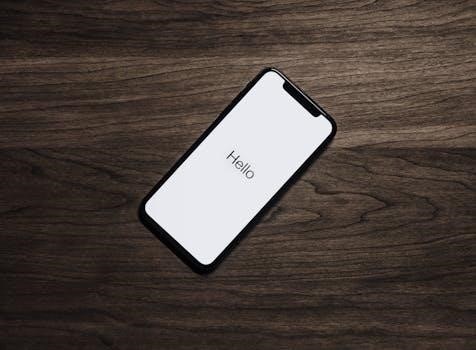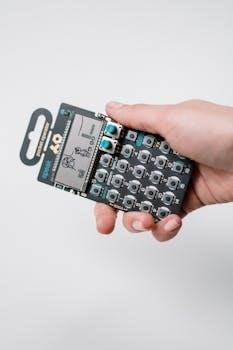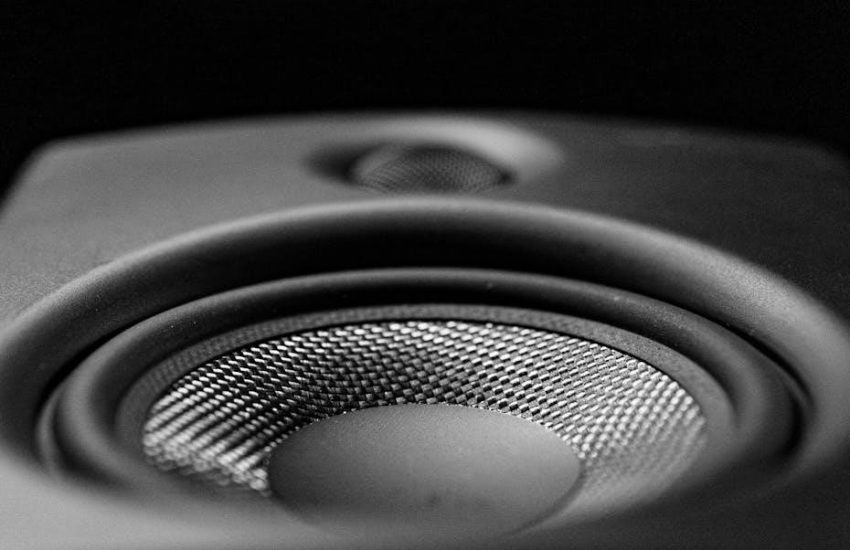uniden dect 6.0 user manual
Uniden DECT 6.0 User Manual⁚ A Comprehensive Guide
Welcome to the comprehensive guide for your Uniden DECT 6.0 phone system! This manual offers detailed instructions‚ covering everything from initial setup to advanced feature utilization. Maximize the potential of your Uniden device and ensure seamless communication.
Uniden’s DECT 6.0 technology represents a significant advancement in cordless phone communication. DECT‚ which stands for Digital Enhanced Cordless Telecommunications‚ operates on a dedicated frequency band‚ minimizing interference from other wireless devices like Wi-Fi routers and Bluetooth devices. This results in superior call clarity and reduced static‚ offering a more reliable and enjoyable calling experience.
The DECT 6.0 standard also provides enhanced security features‚ protecting your conversations from eavesdropping. Unlike older analog cordless phones‚ DECT 6.0 utilizes digital encryption to secure the communication channel between the base station and the handset. This added layer of security ensures your privacy and confidentiality.
Furthermore‚ Uniden’s implementation of DECT 6.0 technology is designed to be Wireless (WiFi) Network Friendly. This means that your cordless phone will not interfere with your home or office Wi-Fi network‚ allowing you to enjoy seamless internet connectivity without any performance degradation. The technology offers unsurpassed range performance ensuring crystal-clear sound clarity‚ making it ideal for both home and office environments. Uniden continues to innovate and provide users with the best calling experience.
Key Features and Benefits of DECT 6.0
Uniden’s DECT 6.0 technology offers a range of features and benefits designed to enhance your communication experience. One of the primary advantages is its superior call clarity. By operating on a dedicated frequency‚ DECT 6.0 minimizes interference from other wireless devices‚ resulting in crystal-clear sound quality‚ free from static and distortion. Enjoy clearer conversations‚ whether you’re at home or in the office.
Enhanced security is another key benefit. DECT 6.0 utilizes digital encryption to protect your calls from eavesdropping‚ ensuring your privacy and confidentiality. This added layer of security provides peace of mind‚ knowing that your conversations are secure.
The extended range of DECT 6.0 allows you to move freely throughout your home or office without losing signal strength. Enjoy the freedom to talk on the phone while multitasking or relaxing in different rooms. Furthermore‚ Uniden’s DECT 6.0 phones are designed to be Wi-Fi friendly‚ preventing interference with your wireless network. This ensures seamless internet connectivity while using your cordless phone. Finally‚ many Uniden DECT 6.0 phones offer features like caller ID‚ call waiting‚ and answering system integration. These features provide added convenience and functionality.

Initial Setup and Configuration
Setting up your Uniden DECT 6.0 phone is straightforward. This section guides you through connecting the base station‚ installing the handset battery‚ and registering handsets. Follow these steps for a smooth start with your new phone system.
Connecting the Base Station
Properly connecting the base station is the first crucial step in setting up your Uniden DECT 6.0 phone system. Begin by identifying a suitable location for the base station. It should be near a power outlet and a telephone jack. Ensure the area is free from obstructions that could interfere with the signal.
First‚ connect the power adapter to the base station and plug it into the power outlet. Next‚ use the provided telephone cord to connect the base station to the telephone jack. Make sure the connections are secure to avoid any interruptions.
Once both the power and telephone connections are established‚ verify that the power indicator light on the base station illuminates. This indicates that the base station is receiving power. If the light does not turn on‚ double-check the power connections and the outlet itself.
After confirming the power connection‚ test the telephone line by connecting a known working phone to the same jack. If the phone line is functional‚ proceed to the next step of installing and charging the handset battery.
By following these steps carefully‚ you can ensure that your Uniden DECT 6.0 base station is correctly connected and ready for use. This will lay the foundation for a successful setup and optimal performance of your phone system.
Installing and Charging the Handset Battery
The next essential step is installing and charging the handset battery. Your Uniden DECT 6.0 phone requires a charged battery to operate wirelessly. Begin by locating the battery compartment on the back of the handset. Typically‚ it has a small notch or release button.
Carefully open the battery compartment and insert the rechargeable battery pack‚ ensuring the correct polarity (+ and -) is aligned as indicated inside the compartment. Once the battery is properly installed‚ securely close the compartment cover until it clicks into place.
Now‚ place the handset on the base station for charging. Make sure the charging contacts on the handset align with those on the base station. A charging indicator on the handset should light up‚ indicating that the battery is charging. If it doesn’t‚ try repositioning the handset.
Allow the handset to charge for at least 15 hours for the initial charge. This ensures the battery reaches its full capacity. Subsequent charges will typically take less time. Avoid interrupting the charging process during the initial charge for optimal battery performance.
Once fully charged‚ the handset is ready for use. Monitor the battery level indicator on the handset display to determine when recharging is needed. Following these steps will ensure your Uniden DECT 6.0 handset is powered and ready for calls.
Registering Handsets to the Base Station
Registering handsets to the base station is a crucial step‚ especially when adding extra handsets or replacing a lost one. This process allows the handsets to communicate with the base station and utilize all the phone system’s features. Begin by ensuring the base station is powered on and the new handset has a charged battery.
On the base station‚ locate the registration or paging button. This button is usually found on the back or side of the base station. Press and hold this button for a few seconds until the registration indicator light starts flashing. This indicates the base station is in registration mode.
Next‚ on the handset you wish to register‚ navigate to the menu. Look for an option labeled “Registration‚” “Register Handset‚” or something similar. Select this option.
The handset will then search for available base stations. Once it finds your Uniden DECT 6.0 base station‚ select it from the list. You may be prompted to enter a system PIN. The default PIN is often “0000.” Enter the PIN and confirm.
The handset will then begin the registration process. This may take a few moments. Once the registration is complete‚ the handset display should show a confirmation message‚ such as “Registration Successful” or “Handset Registered.” The handset will now be able to make and receive calls through the base station.

Basic Operations
This section details the fundamental operations of your Uniden DECT 6.0 phone. Learn how to effectively make calls‚ answer incoming calls‚ manage your phonebook contacts‚ and utilize caller ID and call waiting features for streamlined communication.
Making and Answering Calls
Making and answering calls with your Uniden DECT 6.0 phone is straightforward. To make a call‚ simply pick up the handset and enter the phone number you wish to dial. Press the TALK button to initiate the call. If you have Caller ID service‚ the caller’s information will be displayed on the handset screen during an incoming call.
To answer a call‚ press the TALK button when the phone rings. You can also configure the AutoTalk feature (if available) to automatically answer calls when you pick up the handset from the base. To end a call‚ simply press the TALK button again or place the handset back on the base unit.
During a call‚ you can adjust the volume using the volume control buttons on the handset. If you need to mute your microphone‚ press the MUTE button. This will prevent the other party from hearing you. Press the MUTE button again to unmute the microphone.
For advanced call handling‚ you can utilize features like call waiting and call transfer (if supported by your model and service provider). Consult the advanced features section of this manual for detailed instructions.

In case of any issues‚ such as poor audio quality or dropped calls‚ refer to the troubleshooting section for potential solutions. Ensure that the base unit is properly connected and that the handset is within range.
Using the Phonebook
Your Uniden DECT 6.0 phone offers a convenient phonebook feature for storing frequently dialed numbers. To access the phonebook‚ press the PHONEBOOK button on the handset. The phonebook directory will be displayed on the screen.
To add a new contact‚ navigate to the “Add New Entry” option in the phonebook menu. Enter the contact’s name and phone number using the keypad. You can typically store multiple numbers for each contact‚ such as home‚ work‚ and mobile numbers. Once you have entered the information‚ save the contact to the phonebook.
To find a contact‚ you can scroll through the phonebook directory using the navigation buttons or search by name. Some models may offer predictive text entry for faster searching. Once you have found the desired contact‚ press the TALK button to dial the number.
You can also edit or delete contacts from the phonebook. Select the contact you wish to modify and choose the “Edit” or “Delete” option from the menu. Follow the prompts to make the necessary changes or remove the contact entirely.
The phonebook capacity varies depending on the model. Refer to the specifications in this manual for the maximum number of contacts you can store.
Caller ID and Call Waiting Features
The Uniden DECT 6.0 phone system supports Caller ID and Call Waiting features‚ enhancing your calling experience. Caller ID displays the caller’s name and number (if available) when you receive an incoming call. This allows you to identify the caller before answering‚ helping you screen unwanted calls.
To use Caller ID‚ you must subscribe to Caller ID service from your telephone service provider. The information is transmitted between the first and second ring. Your phone stores this information. The phone must be connected to a working phone line with Caller ID service enabled.
Call Waiting allows you to receive a second call while you are already on an active call. A tone alerts you to the incoming call‚ and the Caller ID information (if available) is displayed on the screen. You can then choose to answer the second call while placing the first call on hold. To switch between calls‚ press the FLASH or HOLD button‚ depending on your phone model.
To enable or disable Call Waiting‚ you may need to contact your telephone service provider or use a specific feature code. Refer to your service provider’s instructions for more details.

Advanced Features and Troubleshooting
Explore advanced features such as the answering system and settings for optimal use. This section provides troubleshooting steps for common issues‚ ensuring smooth operation of your Uniden DECT 6.0 phone. Find solutions and maintain peak performance.
Answering System Setup and Operation
Configuring your Uniden DECT 6.0 answering system involves several steps to ensure it functions according to your preferences. First‚ access the answering system menu on your base station or handset. Here‚ you can set the number of rings before the system answers a call‚ allowing you ample time to pick up the phone yourself. Next‚ record your outgoing message. You can choose to use the default greeting or create a personalized message for callers.
To record a custom greeting‚ follow the prompts within the answering system menu. Speak clearly and concisely to provide callers with the necessary information‚ such as your name or a brief explanation of your absence. You can also set the recording time limit for incoming messages‚ typically ranging from one to three minutes.
Reviewing your recorded messages is easy. Navigate to the message playback option in the answering system menu. You can listen to‚ delete‚ or save messages as needed. Remote access is often available‚ allowing you to check messages from an external phone line by entering a designated access code. This feature is useful when you are away from home or the office.
Proper setup and operation of your Uniden DECT 6.0 answering system ensures you never miss important calls and can efficiently manage your messages. Regular maintenance‚ such as deleting old messages‚ will keep your system running smoothly.
Troubleshooting Common Issues
Experiencing issues with your Uniden DECT 6.0 phone can be frustrating‚ but many problems have simple solutions. If you encounter a “No Line” message‚ first ensure that the phone line is securely connected to both the base station and the wall jack. Try using a different phone to verify the phone line is functioning correctly.
For poor sound quality‚ check the handset’s battery level. Low batteries can sometimes affect call clarity. Also‚ ensure that the handset is within range of the base station. Obstructions like walls or electronic devices can interfere with the DECT 6.0 signal. If you experience interference‚ try repositioning the base station to a more central location.
If a handset displays a “Not Registered” message‚ you’ll need to re-register it with the base station. Consult the manual for specific registration instructions. Typically‚ this involves pressing a button on the base station and then following prompts on the handset.
If the answering system is not recording messages‚ verify that it is turned on and that the memory is not full. Delete old messages to free up space. Also‚ check the outgoing message to ensure it is properly recorded.
By systematically addressing these common issues‚ you can often resolve problems and restore your Uniden DECT 6.0 phone to optimal performance. Always refer to the user manual for detailed troubleshooting steps.


